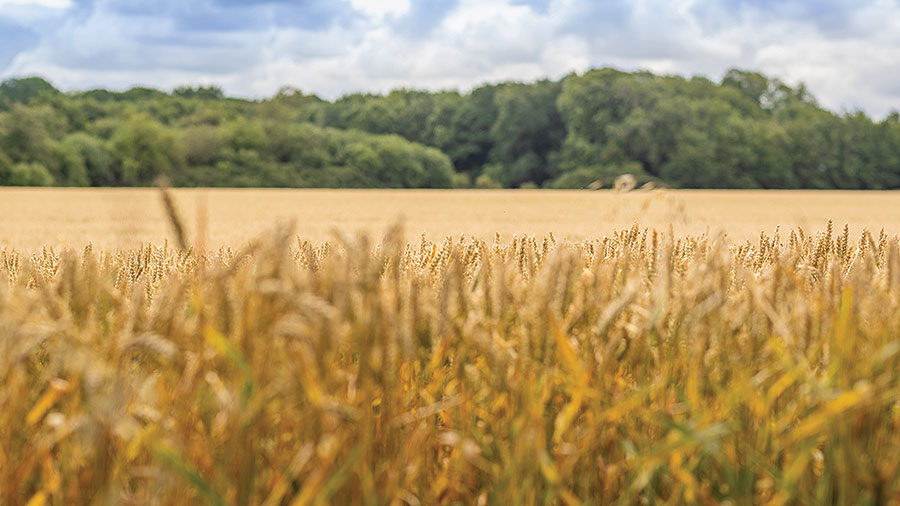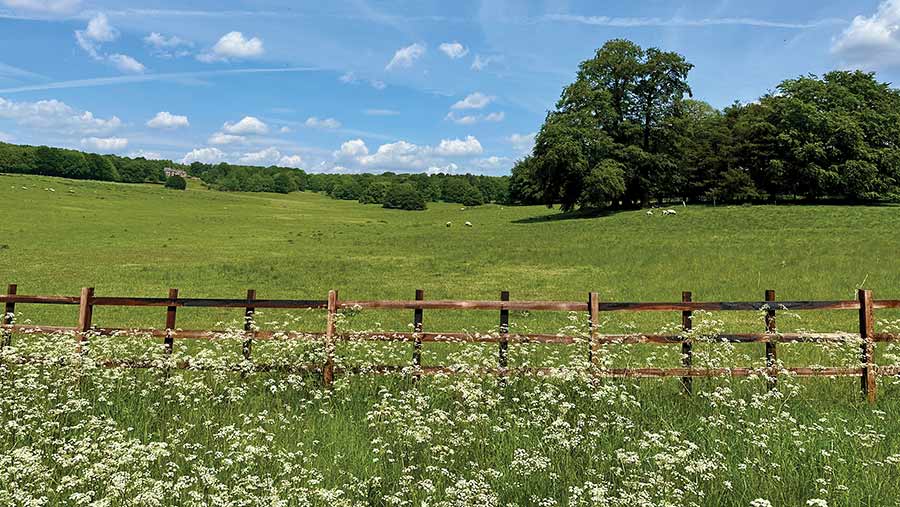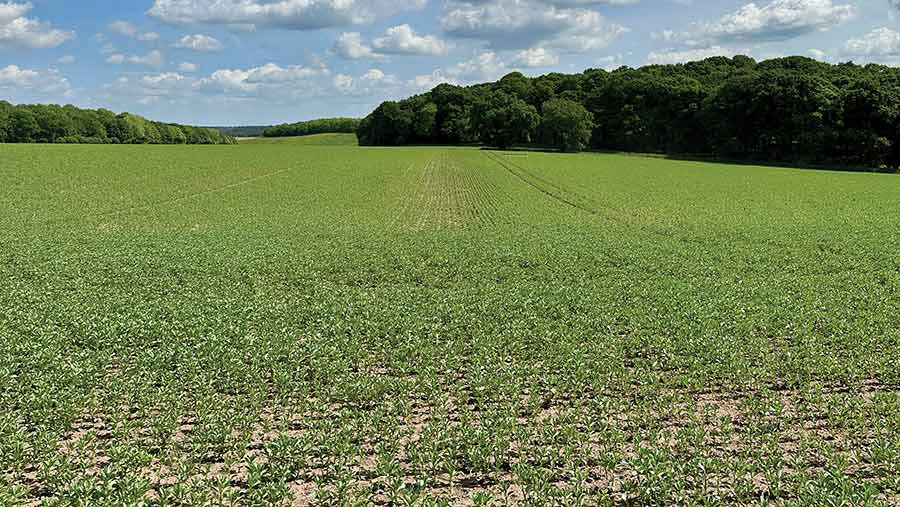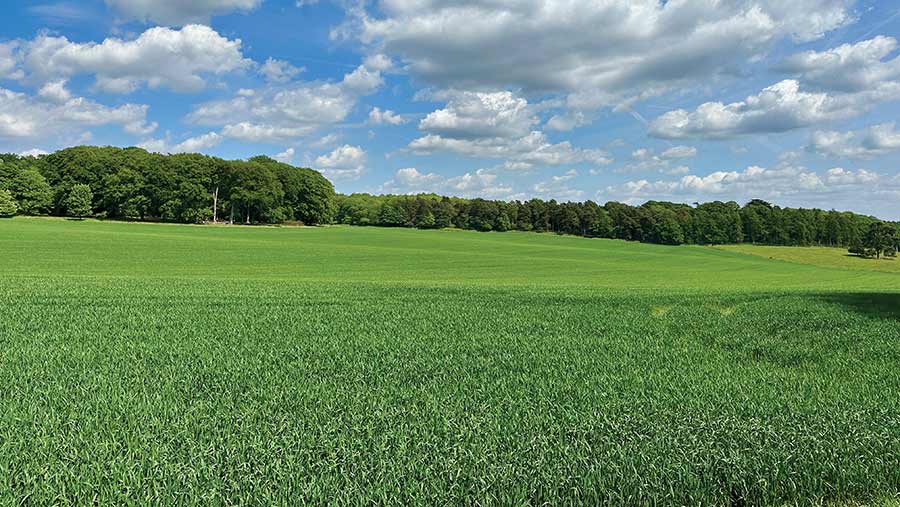Nottinghamshire estate cuts fertiliser rates with organic manure
 Crops on the Welbeck Estate © Welbeck Estate/Alex Wilkinson
Crops on the Welbeck Estate © Welbeck Estate/Alex Wilkinson Greater use of various organic amendments is part of Welbeck Estate’s strategy for reducing reliance of synthetic fertiliser inputs, alongside the use of cover cropping.
Like most large estates and farms, Welbeck, historically known as one of the four “Dukeries” in north Nottinghamshire, aims to farm approximately 1,835ha of in-hand farmland environmentally responsibly as well as profitably.
Key to this policy are activities to improve soil structure and health, including trying to increase organic matter in soils ranging from blowing sands to shallow soils over limestone brash and more bodied clay loams.
See also: A wheat grower’s 4 tests to get nitrogen application rates spot on

Welbeck Estate © Mike Abram
Direct drilling is used selectively, with the bulk of crops established after some form of minimum cultivation, explains farm manager Ray Beck.
“On the sands especially, you need to run some tines through it to break it up, while on the heavier land we usually put some legs down as there is some solid clay underneath.”
A wide diversity of crops is grown. On the stronger land that includes winter wheat, oats, spring beans, and early lifted sugar beet, while later lifted sugar beet, carrots and potatoes on eight-year intervals, and small area of onions and spring barley are among the other crops grown in the lighter land rotation.
The estate also grows an area of maize undersown with grass for the estate’s anaerobic digestion plant.
Liquid and solid digestate from the anaerobic digester plant, which mostly goes back on the maize land or ahead of sugar beet, are just one of the sources of organic amendments for the estate, as it strives to reduce synthetic fertiliser use.
Farmyard manure and slurry from the dairy unit are also key sources, with the FYM also mostly being applied ahead of sugar beet.
In the past, it has also used both council-produced green compost and turkey muck, but, at least for the time being, both no longer feature.
The compost was increasingly coming with plastic contamination, Ray explains, while turkey muck had become expensive, and the estate was concerned whether it increased the risk of bird flu.
This opened the door for greater use of slurry produced from the 240-head dairy unit, which is the source of raw milk used to produce Stichelton blue cheese.
Currently slurry is applied to fields relatively near the dairy using either an old irrigation system or an umbilical line for fields slightly further away, Ray explains.

Bean crop growing at Welbeck Estate © Mike Abram
Second wheat boost
Applications in September before the closed period to second wheats this autumn have resulted in some of the best second wheats on the farm for a while, he notes.
“They’ve tillered well early on, and allowed us to reduce overall nitrogen applications by 20%.”
This is encouraging the estate to look at investing in another 2,000cu m slurry store further away from the dairy to allow the estate to also apply slurry in the spring on the sand land.
“While we’ve found applying it at establishment has made a difference, I think we’ll find it also makes a big difference in the spring as well, picking up nitrogen, phosphate and potash, as well as other nutrients.
“We should be able to make a big saving on one or two different nutrients,” says Ray.
It could help reduce applied nitrogen by 30%, he suggests.
“Last year we cut nitrogen applications by 10% across the board on feed wheats, from 220kg/ha to 200kg/ha, and have maintained that level this season, except on the second wheats where we’ve used the slurry on the second wheat and been able to cut further.”
All sources of organic amendments are tested for nutrient levels before application, and then accounted for in his nutrient management plans.

Wheat crop at Welbeck estate © Mike Abram
Cover crops
Cover cropping is another key component of the overall strategy to manage nutrient use efficiently.
Welbeck uses a Kings cover crop mix containing winter oats, two species of oil radish and phacelia to mop up nutrients overwinter ahead of spring crops and to help avoid wind and water erosion on prone soils.
With up to £136/ha funding available from Severn Trent’s Environmental Protection Scheme (Steps) the covers are drilled in August through to early September, and then where possible grazed by a flying flock of sheep after 15 January.
Non-grazed covers are lightly disced in “green” in February, before being sprayed with Roundup (glyphosate) just before drilling the spring crop to remove any remaining residue.
Cover crop samples are analysed to help understand what nutrients have been captured, he says.
“We know the covers do a good job, but we don’t know what is released back for the next crop – we think it might be about half, but we’re not sure – so I think that will be another test we do next time to see what we can find out,” says Ray.
Testing is also ongoing to see whether the various changes in practice to include cover cropping and using more organic amendments are increasing organic matters, Welbeck’s Frontier agronomist Jeremy Nicholson says.
Reduce pesticide use
As well as cutting nitrogen, the estate is looking to reduce pesticide use. Sugar beet is grown without the use of neonicotinoid insecticide seed treatments, despite its availability this season.
Following crop restrictions were also a consideration when deciding whether to order it or not, Ray says.
“Last year we got away lightly with it, and if it remains cold for another week going into June, we hopefully shouldn’t have an issue.”
Insecticides are avoided in other crops unless it becomes evident, they need to be used to prevent significant yield loss, while fungicide use is also minimised.
Wheat variety choice is a compromise between varieties with better disease resistance and those that have proved good performers on the Welbeck Estate in Gleam, Skyscraper and Dawsum.
Newer varieties – this year Champion and Typhoon – are regularly tried in smaller seed plot blocks to evaluate whether they will make the cut.
Sustainable source of N trialled
A nutrient efficiency biostimulant which provides a unique way for plants to capture nitrogen through the season is being trialled at Welbeck.
BlueN from Corteva contains a bacteria, Methylobacterium symbioticum, which enters the crop through its stomata and colonises in between leaf cells, fixing nitrogen from the air into ammonium to give a constant supply of nitrogen into the plant.
“That’s something we are trialling on wheat to see whether we can help the plant grab atmospheric nitrogen instead of having to put it on through the bag or sprayer,” explains Jeremy Nicholson.
“We’re looking at whether we can produce the same yields from a reduced nitrogen input, or whether we can take yield to another level from the same nitrogen input.”
The replicated trials will be fully analysed using ADAS Agronomics, he adds.
“It’s the estate’s ambition to reduce the use of manufactured fertilisers, so the more we can use organic amendments and these type of products, if they work, the better.”
Ray Beck and Jeremy Nicholson were speaking to Farmers Weekly at the recent Institute of Agricultural Management national farm walk at Welbeck Estate

